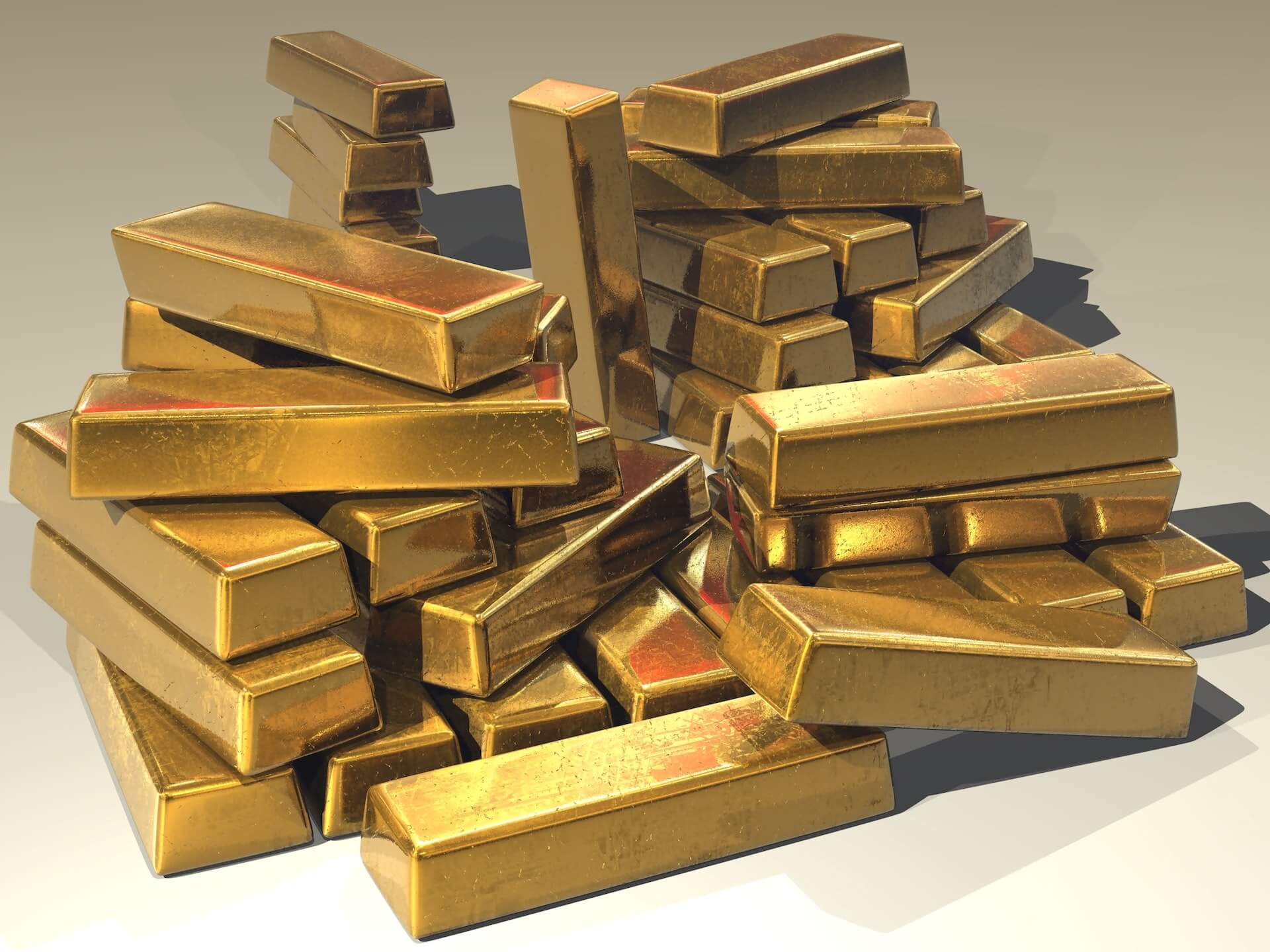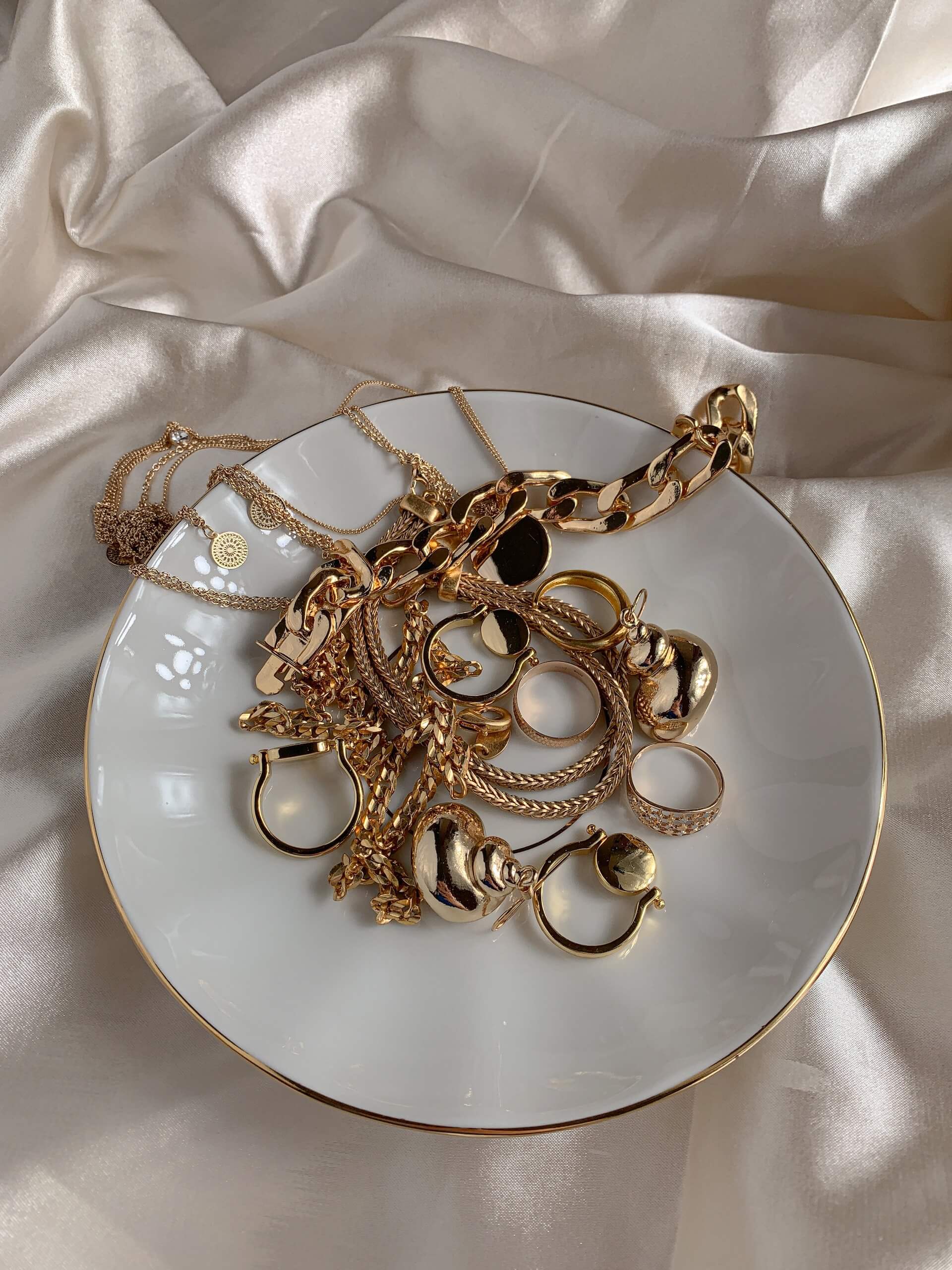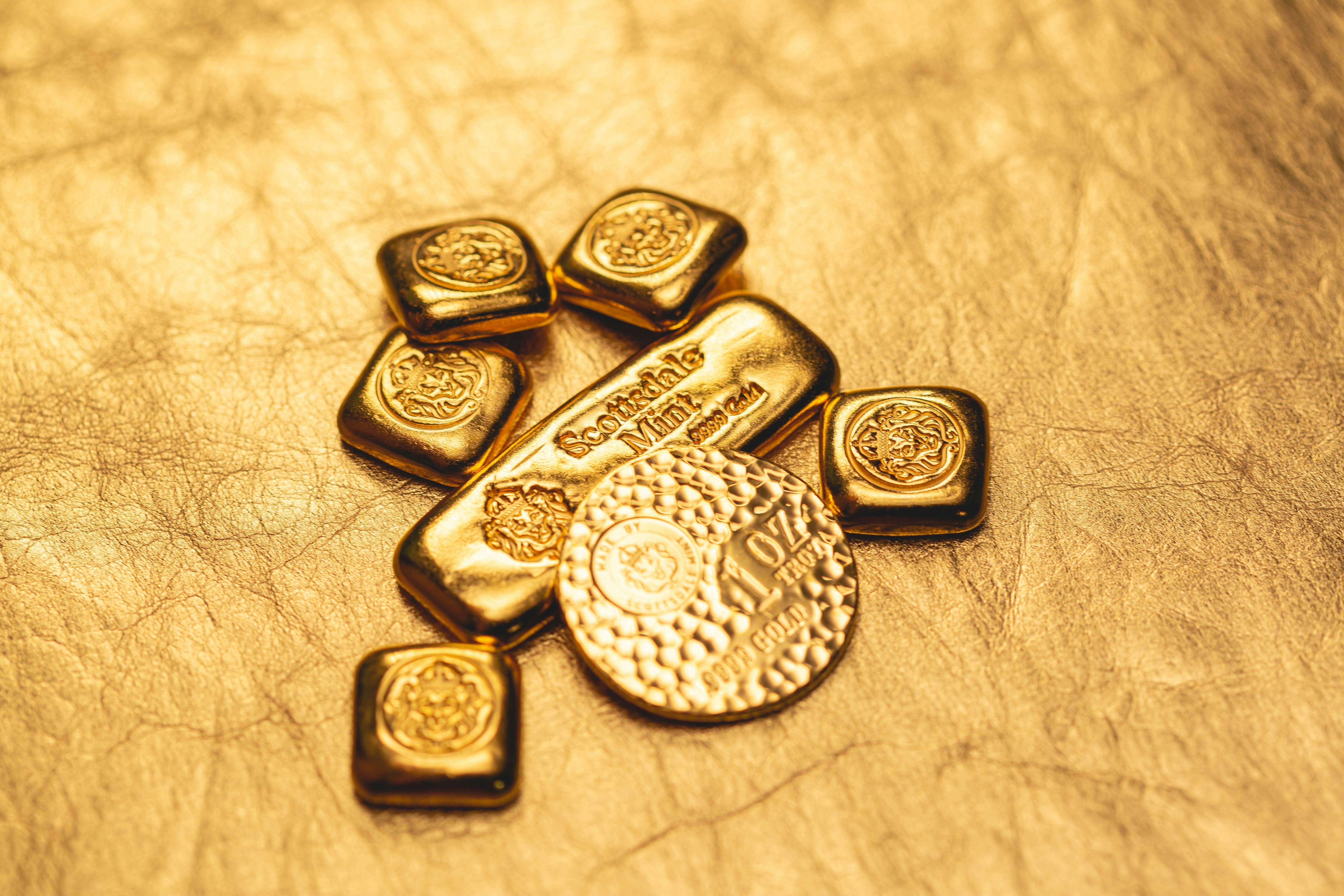
Materials science 3: Gold
Properties, Production & Other Facts
The necklace inherited from Grandma. Tiny components of refined circuit boards from various electronic devices. Or the classic gold bar lying under the Christmas tree as a gift. We encounter gold in many different ways. And there is plenty of it beneath the earth's surface and in the world's oceans. According to estimates, the earth's crust contains up to 30 billion tons, and the world's oceans contain up to 15,000 tons of gold.
Nearly half of the gold is melted into bars and used in industry: as dental replacements or in the aforementioned circuit boards. However, the majority—more than half—is made into jewelry. Gold also plays a role in our Mevisto jewelry pieces—together with gemstones, valuable treasures for eternity are created. Enough reason to dedicate a blog post to this metal. In it, we reveal the special properties of gold, tell you more about its production and history, and have researched more exciting facts for you.
The Shining Treasure from the Earth
Gold has always played a significant role for humans. No wonder, as the metal's shiny yellow color is inherently striking. In nature, it is still mostly found in its native metallic form, meaning as a pure chemical element, and this has been the case since the Copper Age. Initially, the classic gold panning method was used.
Our ancestors would wash gold-bearing sand on riverbanks with water and swirl the mixture in a pan. Since gold is heavier than sand, it settled at the bottom and could be further processed. In addition, gold has been and still is extracted from placer deposits. In geology, these are secondary mineral enrichments in sediments like sand and gravel, where mineral-rich grains have sorted, concentrated, and deposited themselves through mechanical flows and due to their weight.
For instance, the Turin Papyrus, one of the most significant topographic maps from around 1160 B.C., includes a layout of an ancient Egyptian gold mine. Later, the methods of amalgamation and cupellation, or a combination of both, were developed. The former exploits mercury's ability to form an alloy with gold. In this process, stone dust is mixed with mercury, forming a shiny alloy known as amalgam.
This amalgam is then heated until the mercury evaporates, leaving behind pure raw gold. The latter method, cupellation, involves separating gold from alloys with less noble metals.

Modern Gold Production
Today, a distinction is made between primary gold, or "mine gold" from mines and quarries, and secondary gold, meaning "placer gold" or "nuggets." The production, also known as extraction, of primary gold is especially complex. Various methods have been established to extract gold particles from rock deep underground. Amalgamation is still used, but cyanide leaching is more common. In this process, gold-bearing soil is first ground into fine sand.
A sodium cyanide solution then dissolves the precious metal from this dust. Finally, the gold is filtered out of the leach solution using zinc dust, and then it is washed and dried. Gold can also be obtained using the anode slime method. This method applies electrochemical principles: electrolysis causes gold to accumulate as sludge under the anode, which must then be separated from other precious metals present in the rock.
The borax method is another environmentally friendly gold extraction technique. Borax lowers the melting point of the ore, reducing the heat needed for extraction. During the smelting process, gold settles at the bottom of the crucible while other metals rise to the top, making it easy to extract.
Recycling, meaning the processing of dental and jewelry manufacturing waste as well as electronic scrap, is also becoming increasingly important.

For Ritual Objects or as Currency
The alluring shine, rarity, and apparent indestructibility of gold led people to use it primarily for unique ritual objects or jewelry thousands of years ago. Some of the oldest gold artifacts known to humanity are grave goods found in a burial field in Bulgaria, dated by researchers to 4600-4300 B.C. Additionally, ancient earrings, hairpins, gold hats, and artworks have been unearthed worldwide.
However, the discovery and use of this precious metal also have darker historical chapters. The lust for land, and notably for gold, is considered one of the essential reasons for wars and conquests in modern history. The discovery of America in 1492, and the subsequent exploitation of indigenous peoples, is closely tied to this. Historically, gold was also often used as currency.
This meant that a unit of currency corresponded to a certain amount of gold. However, over time, all the world's currencies were decoupled from gold, as the gold standard limited the amount of money issued and the level of national debt.

Gold: A Jewel with Exceptional Properties
One reason why gold is so popular worldwide is its striking appearance. Another is its excellent properties. Gold never loses its shine because it hardly bonds with any other element.
In technical terms, this is called chemically inert. Gold does not rust, tarnish, and is unaffected by almost all acids. Additionally, it is one of the heavy metals, yet it is surprisingly soft and malleable. This makes it ideal for creating ultra-thin wires to connect electrical components, as well as delicate jewelry pieces.
Gold is also an excellent material for dental crowns and fillings due to its durability and longevity. However, there is a catch: pure gold would be too soft for jewelry. This means that valuable items would break under the slightest stress. Therefore, gold is mixed with other metals. Combined with copper, palladium, or silver, it forms harder alloys that last for generations. Our Mevisto jewelry pieces are also treasures for eternity.
The main stars are sapphires and rubies that contain elements of deceased loved ones. They are complemented by durable gold or fine silver, creating precious items that forever remind us of our loved ones.

